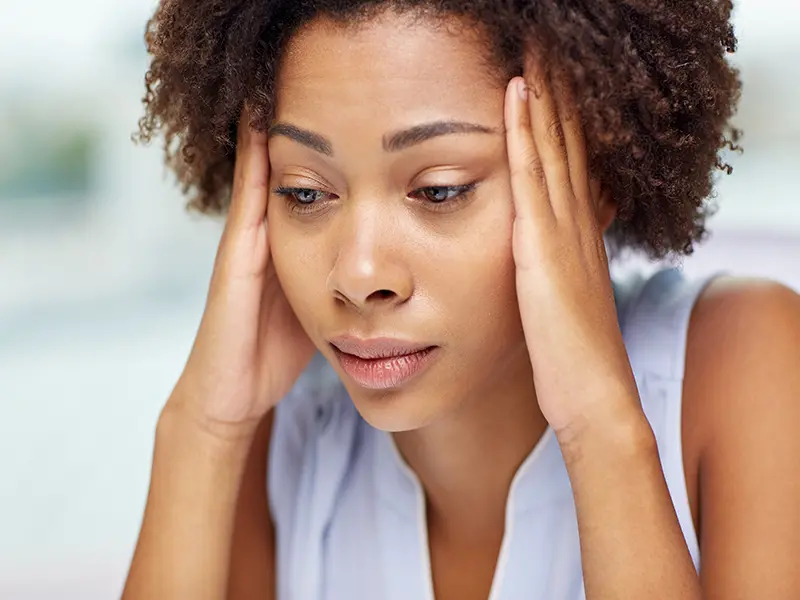I’ll never forget my first one—not just any headache, but the kind of migraine that knocked me down completely. I was young, confused, and all I knew was that light pierced my eyes like lasers and every sound felt like nails in my skull. Crawling under the covers and hoping it would pass was the only plan I had. That day marked the beginning of a long search for answers.
And the deeper I dove, the more I realized this wasn’t just my story. It’s the story of thousands of women. Migraines in women are no coincidence—they’re the result of biological processes we don’t always have control over.
Hormones Dancing to Their Own Rhythm
Migraines in women differ significantly from those in men—not only in frequency but also in intensity and pattern. Experts agree: women suffer from migraines three times more often than men. Why? Hormonal fluctuations are the primary culprits.
Estrogen, that fascinating yet sometimes treacherous hormone, has a direct impact on the nervous system. Its levels fluctuate throughout the menstrual cycle—and it’s the sharp drop just before menstruation that often triggers a migraine.
But it doesn’t stop at menstruation. Puberty, pregnancy, breastfeeding, perimenopause, and menopause—all these phases come with hormonal turbulence. And each of those changes can be a ticket to another painful episode. What’s natural for the body can feel like an explosion in the brain for someone predisposed to migraines.

When Puberty Flips the Switch
In early childhood, boys tend to experience migraines more frequently. But once puberty hits and the first period arrives, that trend flips. The occurrence of migraines in women rises sharply with the onset of reproductive age. Headaches begin to appear at regular intervals, often aligned with the menstrual cycle, and can stick with us for decades.
Ironically, pregnancy often offers a break—hormone levels stabilize, and many women find real relief from migraines. But as menopause approaches, everything ramps up again. Hormonal levels fluctuate wildly, and migraines return—often stronger and more frequent than before.
Genetics We Can’t Deny
Migraines have a strong genetic component. If one parent suffers from migraines, the chances are high you’ll inherit them too. If both do? You’re looking at up to a 70% probability. Some rare forms of migraines have even been linked to specific gene mutations that affect how nerve cells communicate.
Genetics also play a role in more common forms—and when combined with female hormones, they create a potent mix.
When It’s More Than Just a Headache
Migraines in women are more than just head pain. They’re a complex neurological phenomenon that affects the entire body and mind.
The attacks last longer, hurt more, and often come with additional unpleasant symptoms—nausea, vomiting, light sensitivity, and sound sensitivity. Add to that anxiety, depression, and overall fatigue, and it’s clear this isn’t a minor issue.
The emotional toll of migraines is often underestimated. Few people realize how exhausting it is to live in constant fear of the next attack—knowing it can hit anytime, anywhere, and completely paralyze you. That anticipation alone can cause stress that leads to even more migraines, forming a vicious cycle that’s hard to escape.
Menstrual Migraines: A Familiar Foe
Menstrual migraines come in two forms. The “true” menstrual migraine shows up like clockwork—within two days before menstruation and up to two days after it begins. It hits hard, lasts long, and rarely backs down without a fight. It’s caused by a sudden drop in estrogen, which disrupts neurotransmitters like serotonin and throws open the gates to pain.
Then there’s the menstrual-associated migraine, which isn’t quite as predictable but still strongly linked to the hormonal cycle. Its onset may catch you off guard, but the impact is just as brutal. Both types share one thing: they’re harder to treat and more resistant to standard medication.
Medication Isn’t Always Enough
One of the biggest challenges with menstrual migraines is that over-the-counter painkillers often don’t work. That’s why doctors suggest learning your cycle, predicting the migraine, and acting early. Triptans—drugs made specifically for migraines—tend to be more effective, especially when taken early in the onset. Some women even take them preventively, as soon as warning signs appear.
Balancing hormones may also help—whether through hormonal contraception, lifestyle adjustments, dietary changes, better sleep hygiene, or stress reduction. There’s no universal fix, but small changes can lead to surprisingly big relief.
Migraines Deserve to Be Taken Seriously
“It’s just a headache,” we hear all too often. But we know better. Migraines are a disease. Real, physical, often chronic. And for women, they tend to be more severe, more frequent, and more deeply felt. It’s not weakness and laziness. It’s a neurological battle that most people around us can’t even see.
Let’s talk about it. Share stories. Ask for help without shame. The more we understand what’s happening in our bodies, the better we can respond. We might not be able to stop migraines completely—but we can weaken them. We can turn that painful tenant in our lives into an occasional guest.











